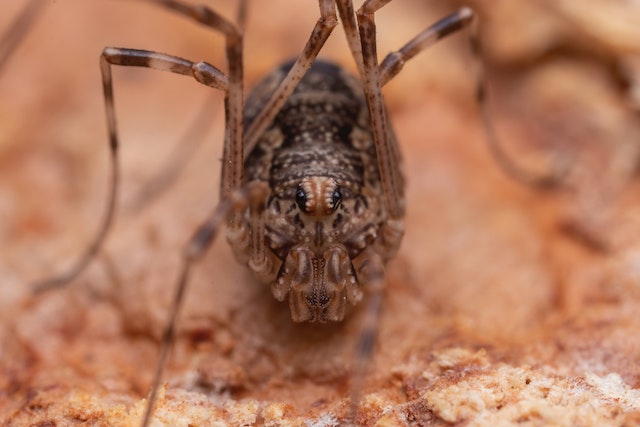

Parasite Prevention: How to Protect Your Pup from Parasites
Prevention is generally preferable to treatment, so it’s best to keep dogs from catching parasites in the first place. How can you prevent infection? What are the signs a dog is infected? Let’s find out.

Writer Animalia Team
6 min read

Internal and external parasites are more than simple pests—they jeopardise the health of your pet by carrying diseases, damaging organs, and impacting their immune system, as well as causing extraordinary discomfort. Prevention is generally preferable to treatment, so it’s best to keep dogs from catching parasites in the first place. How can you prevent infection? What are the signs a dog is infected? Let’s find out.
What is parasite prevention?
Parasites are organisms that live on or within another organism, feeding off of them for sustenance. A dog’s ability to absorb nutrients drops when they are infected with parasites. The organisms can also damage the intestines and cause stomach problems like diarrhea and vomiting. Parasite prevention entails the use of medical treatment and hygiene techniques to protect your puppy from these dangerous creatures. Prevention practices should start early in the puppy’s life since they can potentially become infected as a result of contact with their mother.
External parasites
External parasites are dependent organisms that live outside the host’s body. They include fleas, ticks, lice, and mites.
Fleas
These are tiny, wingless insects that thrive in warm, moist areas and suck the blood of mammals. To determine if your dog has fleas, pay particular attention to the area surrounding the eyes and the groin. Though tiny, fleas are visible upon close inspection. Bites from fleas can cause irritation and itchiness. You might see a dog suffering from fleas scratch themselves to the point of hairloss. Fleas can multiply quickly and even infect humans. They can also spread tapeworms, so ensure you eliminate them as soon as possible.
Ticks
About 850 species of ticks exist worldwide. The United States is home to approximately 90 of them, with populations differing based on the region. Tick-borne diseases include Ehrlichiosis, Rocky Mountain Spotted Fever, and Lyme disease. Since ticks are large parasites, you can often remove them by hand or using tweezers. Your veterinarian can manage removal through a number of methods including dip or powder treatments.

Lice and mites
Lice are tiny wingless insects that live on the skin of mammals. Though similar, mites are smaller and are not classified as insects. Both parasites behave in similar ways. Dog lice aren’t the same as human lice. They typically make a home on the skin around a dog’s forehead, forepaws, muzzle, and eyes. Because they’re contagious, it’s essential to act fast and eliminate them with insecticides
Mites affect various parts of the dog. Ear mites, for example, infect the ears and may cause discharge. They also attack other parts of the skin, where they can take hold and cause intense itching. Over time, severe scratching can lead to rashes and hair loss.
Internal parasites
Internal parasites live inside the host animal’s body. Internal parasites affecting dogs include whipworms, heartworms, tapeworms, hookworms, and roundworms.
Heartworms
Heartworms grow in the dog’s heart, making them among the deadliest types of internal parasites. They can cause respiratory problems and, left untreated, prove fatal. Fortunately, heartworm prevention is easy.
According to the U.S. Food and Drug Administration, heartworm disease is more common along the Mississippi River, around the Gulf of Mexico, and on the Atlantic coast. That said, cases of heartworm infection can occur anywhere in the country. Heartworms can also affect wolves, foxes, and coyotes. Since mosquitoes can transmit the disease, it’s easy for any dog to get infected. As with other types of parasites, prevention is easier and more affordable than treatment. Have your puppy tested regularly and discuss preventive measures with your veterinarian.
Roundworms
Roundworms are among the most common worms found in dogs. Some dogs are even born with them. Dogs get roundworms through ingestion of roundworm eggs or by eating infected birds, rodents, and rabbits. Certain types of roundworms can affect humans and spread from dog to owner.
A vet can diagnose roundworm infection with a fecal sample. Prevention and early treatment are essential because roundworms can kill dogs if they are left untreated.
Whipworms
Whipworms live in the large intestines of their host animals. Most dogs come down with whipworm infections by ingesting eggs. These are found in water and soil as well as the bodies and feces of infected animals. Whipworm eggs can survive up to five years. It’s critical to get your dog checked out and conduct a thorough cleaning if you believe your dog may be infected. A fecal sample can help diagnose whipworms in dogs. Mild infections may not cause symptoms, but more severe cases can cause diarrhea, inflammation, weight loss, and other health concerns.
Tapeworm
Tapeworms attach themselves to the host animal’s intestines. A dog can get them by eating infected fleas. Once the flea gets into the dog’s stomach, their eggs hatch. A dog can also get tapeworms by feeding on a wild animal who is infected with fleas or tapeworms. Tapeworm eggs are easy to spot in a dog’s feces. They look like tiny grains of white rice. Scooting across the floor could indicate discomfort related to an infection..
To determine whether or not your dog has tapeworms, take a stool sample to the vet. The vet will administer treatment which can be oral medicine or injection.They’ll also check for fleas and eliminate any lingering pests, to discourage re-infection.
Hookworms
These are tiny intestinal parasites that affect both dogs and humans. Like other types of worms, they typically pass from dog to dog through infected feces.. A dog can also ingest the larvae from their environment by licking their paws or eating contaminated food. Puppies can even get these worms from their mother’s milk.
Hookworm diagnosis entails a microscopic examination of the feces. Treatment involves administering dewormer. The first treatment kills the adult worm. Then, a second treatment is necessary after 2 to 4 weeks to kill the newly hatched hookworms.
How do I know if my pet has worms?
Each type of worm may cause different symptoms. There are, however, some common symptoms dogs will show when they have worms. These include:
- Vomiting
- Weight loss
- Pneumonia
- Abdominal pain
- Diarrhea
- Lethargy
- Dehydration
- Anemia
- Blood in stool
How to protect your puppy from parasites
There are a number of ways to protect your puppy from parasites. The most appropriate method depends on the age, weight, and activity level of your dog. Consult your vet on which parasite control method is ideal for your pets. Most parasite preventive methods come in the following forms:
- Oral medications
- Vaccinations
- Parasite-prevention collars
- Topical treatments including shampoo, lotions, and ointments
Parasite prevention isn’t a one-time activity. It’s a process that continues throughout a dog’s entire life. Even dogs who spend most of their time napping indoors can potentially become infected. Keep a watchful eye for signs of trouble and, when in doubt, visit your vet.





We offer the most
comprehensive coverage
out there
car with a spare tire for life’s bumps.
Having Animalia is like a pimped-out
Rolls Royce with a swimming pool
in the trunk.



Get your pet insurance quote
Pet type
- Dog
- Cat




